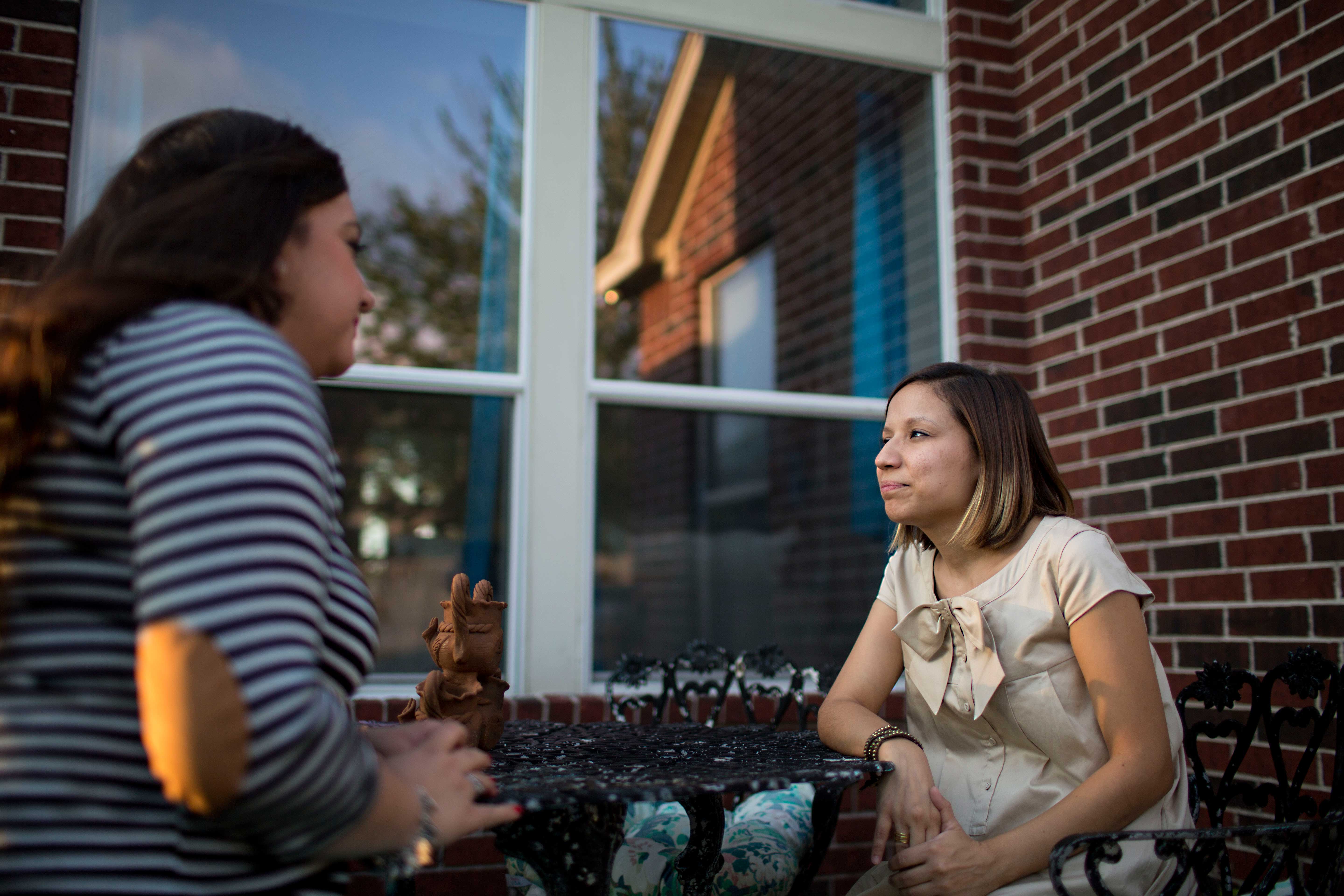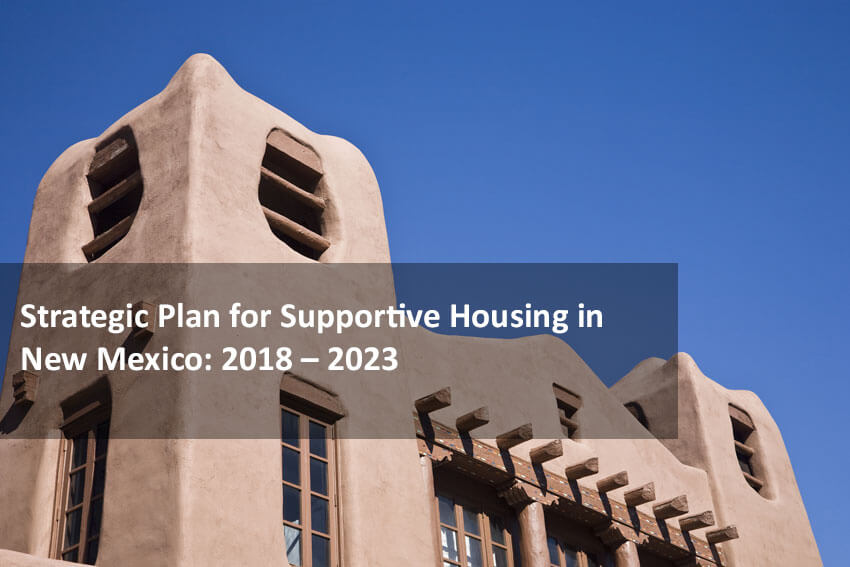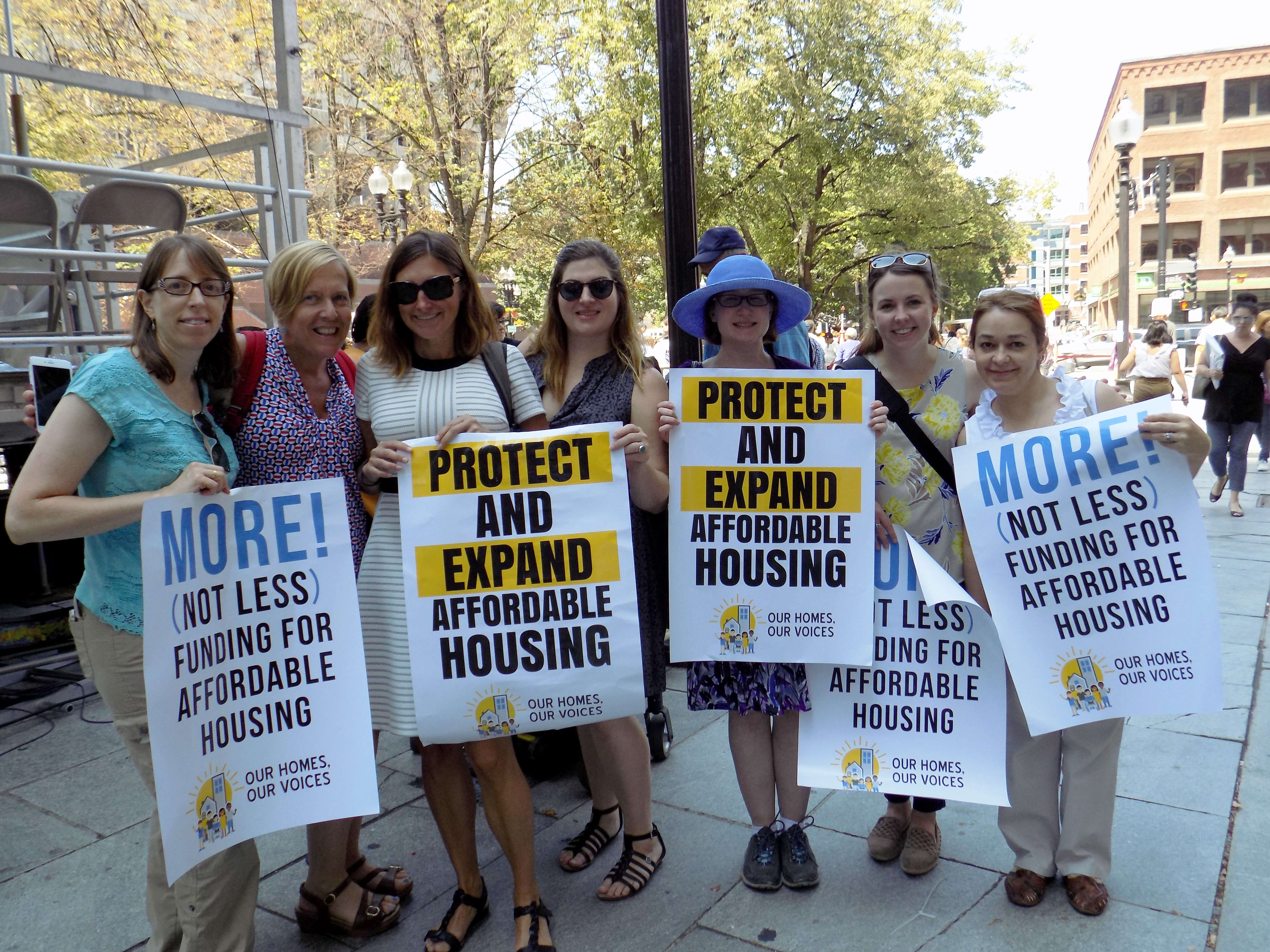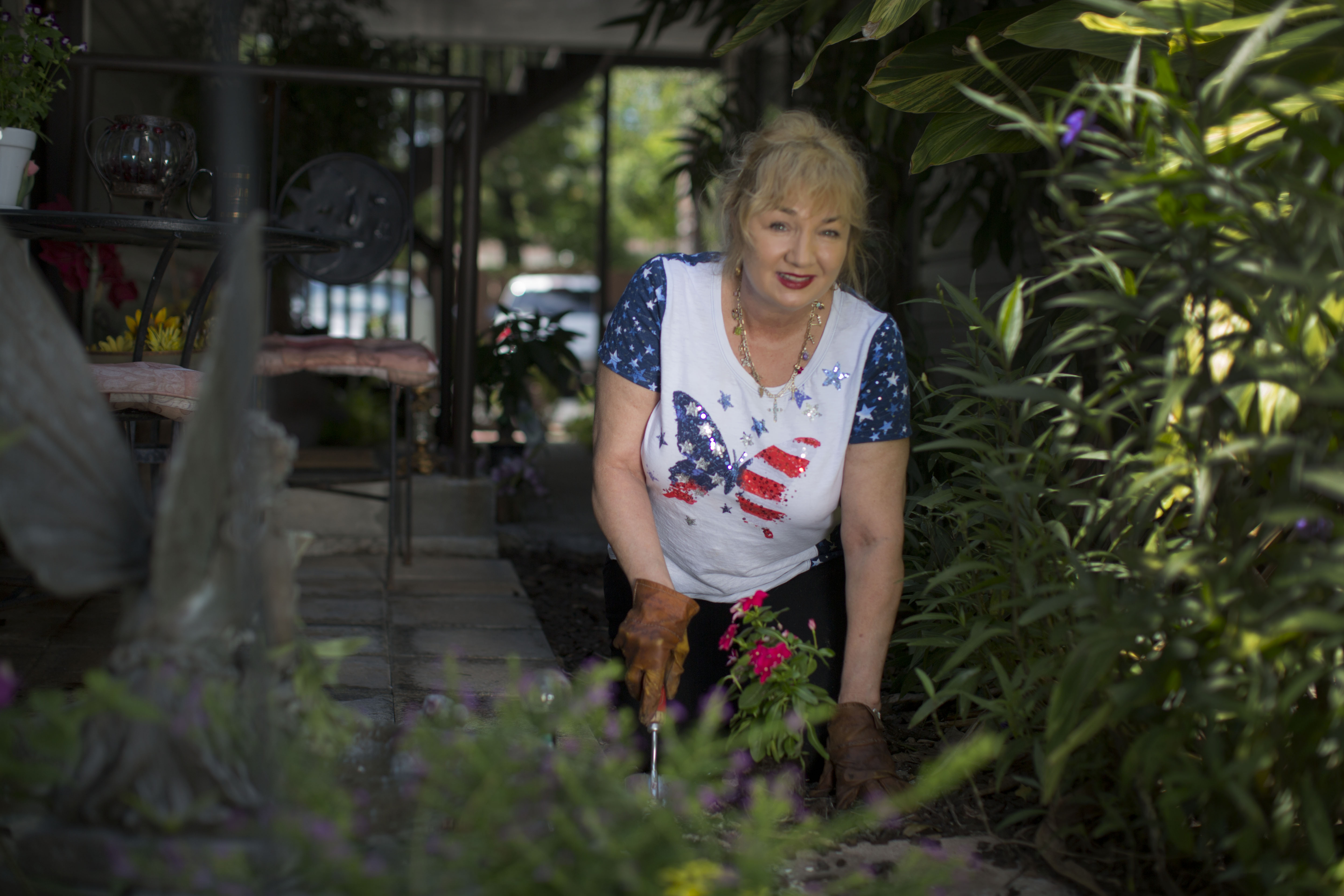Access: The TAC Blog
January 2020: Health and Housing - A Peer-to-Peer Learning Opportunity for Health Care Leaders
HOSPITAL AND HEALTH SYSTEM LEADERS are demonstrating a growing recognition of the powerful ways health outcomes are improved by access to safe and affordable housing. By forming innovative partnerships and programs to address the housing and supportive service needs of vulnerable populations, health care entities have the opportunity not only to improve individuals’ well-being but to reduce costs and strengthen communities as well.
In recognition of this promising trend, TAC — with the support of the Melville Charitable Trust — engaged mission-driven hospitals in a peer-to-peer Housing and Healthy Communities Learning Network that brought the knowledge of subject matter experts to participating hospital leaders. Our goal was to help participating hospitals, which ranged from a large urban institution serving over 180,000 unique patients annually to several that serve smaller rural areas, to explore innovative partnerships in their own communities. With such initiatives, anchor institutions can increase access to affordable housing and the supportive services required to improve health and sustain tenancy for vulnerable patient populations, while also supporting the communities in which they reside.
From June to December of 2019, Learning Network sessions focused on topics such as leveraging hospital resources for housing partnerships, building multi-hospital and cross-system collaborations with the housing sector, identifying priority populations, and evaluating short- and long-term outcomes. Reflecting on the experience, participants appreciated the depth of content covered, and valuable opportunities to connect with other participating hospitals, stakeholders, and subject matter experts. They highlighted these insights:
Collaboration takes work — but it’s worth it.
Participants gained a deeper understanding of the varied considerations and steps required to partner with housing finance agencies, housing developers, and service providers. Participating hospitals reported feeling more equipped and confident to engage such potential partners in conversations now that they are more familiar with the practices, terminology, and vernacular of these systems.
The right data is key.
Participants gained clarity on which sources of data can be used to identify priority patient populations for housing and health care initiatives, and on the metrics that can be monitored to measure a new program’s performance.
Systems of all sizes have a role.
Housing and health care collaborative partnerships can range in size from multi-million dollar efforts, which are most frequently cited in this growing field, to much smaller initiatives (i.e. $100,000 and under). Participants from smaller hospital systems in rural areas noted that this realization gave them hope that they could have an impact and make a significant contribution to their community’s needs.
Potential partners abound.
Participants gained an understanding and appreciation for the diverse key stakeholders that can contribute to an initiative’s design, funding, and promotion. Participating hospitals learned how engaging HUD homeless Continuums of Care, public housing agencies, community health clinics, behavioral health providers, philanthropic organizations, elected officials, and others can help generate community and public support for these kinds of initiatives and set them up for long-term sustainability.
Cutting-edge innovators have knowledge to share.
Charles Richman, Executive Director of the New Jersey Housing and Mortgage Finance Agency, described his agency’s initiative, which incentivized hospitals to develop multifamily housing with set-aside units for frequent utilizers of hospital emergency departments. Barbara DiPietro, Senior Director of Policy at the National Health Care for the Homeless Council, reviewed for participants the extensive list of recent studies documenting the efficacy of combining housing, health care, and supportive services for those who are frequent utilizers of emergency service systems. Participants also appreciated a range of publications and case studies accompanying each of the topical sessions, and reported that they have used this literature to engage executive leadership in discussions about launching their own housing and health initiatives.
UPDATE
TAC is excited to announce a second round of the Housing and Healthy Communities Learning Network, to be offered in six monthly virtual learning sessions from May to October of this year. This round of the Learning Network will be focused regionally, and is open to hospitals in Delaware, Kentucky, Maryland, North Carolina, Virginia, West Virginia, and the District of Columbia.
For more information and directions for a simple application process, visit bit.ly/Housing-Learning-Network or email TAC Senior Associate Rachel Post. *** Please note that due to the Coronavirus crisis, the timing of this opportunity may be adjusted. Please be in touch about your interest and needs.
December 2018: Permanent Supportive Housing — Renewing Our Commitment
Last week, I had the pleasure of delivering the keynote address at the annual conference of the Supportive Housing Association of New Jersey. This gathering marked the association’s 20th anniversary, an opportunity to reflect on two decades of work to make permanent supportive housing — i.e., lease-based housing paired with voluntary, flexible services — a primary intervention for people with a wide range of disabilities and for people experiencing or at risk of homelessness. Many other states, too, have invested time and resources in the successful expansion of this approach for their homeless and disabled populations.
In an interesting fluke of timing, the New York Times had published an article the day before the conference, highlighting negative stories about permanent supportive housing (PSH) in New York and painting a picture of a model that had too often failed persons with serious mental illness. The tone of the article was keenly felt by this group of PSH practitioners, and several leaders from other states and policy groups have since contacted me to discuss the article’s potential impact. How could PSH — an approach that leaders in many states are working to expand in order to support the community integration needs of those who are homeless or disabled — be represented as a failure? What are the article’s implications for those seeking to invest in or expand PSH, for providers, and for people determined to live independently?
While the Times article was alarming, strong evidence nevertheless suggests that people with serious mental illness can succeed in PSH, and that use of the model should indeed be expanded. But there are considerations that must be addressed to ensure that PSH meets the needs of the people it is intended to serve.
Supportive Housing Works
People with serious mental illness have historically lived in institutional settings whether they actually needed to or not. Over time, however, understanding has grown that the policy of housing people in state psychiatric hospitals, for example, is both cost-ineffective and inhumane, and that it fails to demonstrate positive outcomes. Deinstitutionalization efforts from the 1970s to the 1990s meant that many more people with mental illness began living in the community. We all know the story of the resulting growth in homelessness and trans-institutionalization to correctional settings, as public systems failed to develop their community-based services capacity and affordable housing resources to meet the increase in demand. Some people had access to services and residential supports, but many did not, and many still do not today.
When I was a case manager over 20 years ago, "supportive housing" meant doing everything possible to get people with mental illness into housing and helping them stay there. Over time, anecdotal stories of success across the country evolved into an evidence base for what we now know as permanent supportive housing.
There is plenty of evidence to demonstrate the effectiveness of PSH for people with mental illness and for people transitioning from homelessness. Many PSH programs have shown increased housing stability, decreased emergency department and inpatient use, reduced jail days, and significant cost savings compared to homelessness, inpatient care, and other institutional or supervised settings.
Even the statistics noted by the Times suggest that a large majority of people have succeeded in supportive housing. It is important to regard this in light of evidence showing safety and quality of care concerns in New York's adult homes, the housing situation from which many people with mental illness move into supportive housing.
Services Must Be Well-Designed and Adequately Funded
Does supportive housing work for everyone? No. Some people need supervised treatment settings, or prefer group residential programs. However, contrary to the assumptions that used to govern our mental health care systems, supportive housing in the community has been shown to work for a variety of people, including those with the most significant needs who are transitioning from state psychiatric hospitals, nursing facilities, jails, or homelessness. Even people with the most complex conditions need a place to call home that is not contingent on being a "compliant" patient or a "good" client; in fact, providing a choice of housing together with voluntary services has been shown to strengthen retention in housing and services.
In order for PSH to be successful, particularly for persons with complex needs, services must be voluntary, flexible, responsive, robust, and comprehensive. Furthermore, they must be delivered by well-trained staff who are able to provide the right types of services, in the right locations (i.e., where people live), and at the right times, adapting what is offered to meet individuals’ evolving needs. Providers that struggle to adequately support people in PSH are often those with inadequate staffing, which makes them unable to respond quickly and appropriately.
To underfund services is to undermine the ability of providers to meet the needs of PSH tenants. In my experience, the services covered by Medicaid are not, on their own, enough to meet the needs of many people who could otherwise succeed in PSH. If systems will be expected to serve an increasingly complex population, state and county funding agencies and Medicaid managed care organizations must have adequate resources available to pay for a full range of services; successful permanent supportive housing programs are those that braid or blend Medicaid with other resources.
Building On the Evidence
As a former state mental health commissioner, a behavioral health provider, and the family member of someone with a mental illness, it boggles my mind that we would rather pay several hundred thousand dollars per year to house a person in an institutional setting than commit a fraction of that amount to support them in an integrated, community-based setting with demonstrated positive outcomes. Too often, the response to challenges that arise in PSH is an assumption that a person is "not ready," or "needs supervision," instead of a person-centered mindset that tailors and continually adapts services to each individual’s needs and choices.
Yes, people with mental illness and other disabilities may need inpatient treatment, at times. They may need round-the-clock support, at times. They may need assistance with their medications, at times. They may need transportation to medical appointments, at times. People with mental illness and other disabilities may need lots of things — but that doesn’t mean we should return to institutionalization at a cost that is much greater than the sum required to meet all of those needs. With sufficient resources to pay for both rental assistance and robust, flexible services, permanent supportive housing can be a primary intervention for individuals with complex needs.
Systems should move forward on bringing well-designed, fully funded permanent supportive housing to scale, so that all who can benefit from living in safe, independent, community-integrated housing have the opportunity to do so.
May 2018: A "Must Do" Approach Brings a New Rapid Re-housing Program to Fairbanks, Alaska
FAIRBANKS IS THE REGIONAL HUB for interior Alaska, an area larger than the state of Texas. The city’s need for supportive housing is amplified by its remote rural and frontier location and extreme arctic conditions. Although the number of people experiencing homelessness in Fairbanks — approximately 250 people at any given time — seems small compared to what other major U.S. cities report, the impact of homelessness in this community is an important factor: Even during bouts of -50° Fahrenheit temperatures, Fairbanks routinely has more than 50 people trying to survive in local encampments. There have been times when dramatic temperature changes caught encampment residents off guard, resulting in numerous cold weather injuries and even some deaths.
Since 2014, TAC has worked with state and local partners on strategies to create permanent supportive housing and rapid re-housing opportunities for Alaskans. Last December, TAC was invited to facilitate the Fairbanks Symposium on Homelessness, with the goal of generating momentum toward a community planning strategy for tackling homelessness in some of the most diverse geography and climate in the United States. As in other cities and towns across the country, both the cost of housing and a lack of available units present significant challenges. But the "must do" attitude of the local Fairbanks community has already resulted in remarkable progress, and can serve as a beacon for those working in other rural communities to prevent and end homelessness.
The Fairbanks Housing and Homeless Coalition is leading the charge, representing more than 20 local organizations that provide shelter, support, and opportunities for community members struggling with housing barriers. Since the Symposium, the city’s housing and homelessness coordinator has brought local agencies together for more planning. Collectively, the group has contributed an estimated $58,360 worth of in-kind donations to initiate a program that can quickly connect families and individuals experiencing homelessness to permanent, private market housing through intensive case management, applicable employment services, and tapering financial support. Just this month, the Alaska Mental Health Trust announced that it will fully fund this local rapid re-housing program!
The Fairbanks Rescue Mission, which is already implementing rapid re-housing for Veterans through a federal Supportive Services for Veteran Families grant, has been designated as the lead agency for the award. The funding provided by the Trust will allow the new program to hire two full-time staff members and assist approximately forty families a year with housing, case management, and landlord support. The Trust has given a further boost to efforts in the region by providing funding for the Alaska Coalition on Housing and Homelessness to hire a rural housing planner who can help build local coalitions in rural Alaska and improve the region’s readiness to apply for funding to meet its needs.
Fairbanks’ challenging environmental conditions and extremely rural setting make providing effective and targeted services to the community’s most vulnerable individuals a high priority. Fortunately, the community’s determination to make life better for its least advantaged members is just what is needed.
March 2018: News, Resources, & Happenings at TAC
Long-Range Planning for Supportive Housing in New Mexico
Beginning with the successful launch of the New Mexico Behavioral Health Purchasing Collaborative Long Range Supportive Housing Plan in December of 2007, TAC has supported the state's sustained effort to create and maintain independent, decent, safe, and affordable housing options linked to flexible community-based supports - a model commonly referred to as permanent supportive housing (PSH). Now, with the release of the new Strategic Plan for Supportive Housing in New Mexico: 2018-2023, co-authored by Cynthia Melugin of the New Mexico Human Services Department and TAC Senior Consultants Jim Yates and Sherry Lerch, the state is excited and empowered to continue creating new PSH opportunities - while also advancing efforts to realign New Mexico's behavioral health services system. New Mexico aspires to lead by example, adopting innovative strategies to address the challenges of operating PSH across a rural frontier state with a diverse population.
TAC Staff in Action
Staff Activities
Associate Phil Allen, TA & Training Coordinator Kyia Watkins, and Senior Consultant Jim Yates, in partnership with the Department of Veterans Affairs, led a first-ever two-day Program Manager Academy for 75 Supportive Services for Veteran Families (SSVF) program managers from across the country; Associate Amy Horton conducted a site visit in New York, NY as part of SAMHSA's national evaluation of the Cooperative Agreements to Benefit Homeless Individuals (CABHI) grant program; Associate Ashley Mann-McLellan and two young adult TA providers from the National Youth Forum on Homelessness attended a two-day workshop together in King County, WA on incorporating youth voices into ending youth homelessness; Ashley also attended this month’s National Alliance to End Homelessness Conference on Youth and Family Homelessness, where she presented on infusing behavioral health partnerships into housing models; Kevin Martone, TAC’s Executive Director, was at the conference too, facilitating a panel discussion he organized on Medicaid and homelessness — and in February, Kevin spoke at the Families USA Health Action Conference on “Reconstructing a Fragmented Behavioral Health System through Wellness and Whole Person Care”; Senior Associate Gina Schaak and Senior Policy Advisor Lisa Sloane headed to Washington, DC for the National Low income Housing Coalition’s annual legislative forum; and Associate Douglas Tetrault, in partnership with the VA SSVF Program Office, led a day-long planning meeting in San Juan, PR focused on efforts to end homelessness among veterans following the devastation of hurricanes Irma and Maria.
STAFF Transitions
Congratulations to Associate Lauren Knott and her family on the birth of Eliza Everett Knott — glad to have you on the team, Eliza!
September 2017: News, Resources, & Happenings at TAC
“It Makes Me Feel Like I Mean Something”: Success Stories in Community Integration
Permanent supportive housing enables many people with disabilities to live independently and participate fully in their families and communities. The Section 811 Project Rental Assistance program of the Department of Housing and Urban Development (HUD) helps communities forge partnerships and leverage resources to help people move out of unnecessarily restrictive environments and into their own apartments - and to help them thrive once there. In these videos and vignettes produced by the HUD Office of Multifamily Housing with TAC's assistance, you'll see how community integration through supportive housing looks for Tanesha, Destiny, Avia, and Mr. Poole, four individuals with diverse needs and histories who live in different parts of the country. You will also hear from service providers and property managers about what makes the 811 PRA program work.
Determining the Real Need for Inpatient Psychiatric Beds
Two TAC authors have contributed working papers to a new series published by the National Association of State Mental Health Program Directors, taking on the question: "What is the inpatient bed need if you have a best practice continuum of care?" In The Role of Permanent Supportive Housing in Determining Psychiatric Inpatient Bed Capacity, Sherry Lerch and Kevin Martone discuss the importance of permanent supportive housing (PSH) as a core intervention in a strong community-based system, and how PSH capacity can reduce the demand for psychiatric inpatient beds. In The Role State Mental Health Authorities Can Play in the Delivery of Integrated Primary and Behavioral Health Care for People with Serious Mental Illness, Including Those with Co-Occurring Substance Use Disorders, Sherry Lerch lays out changes in planning, financing, and procedures that can help SMHAs improve care integration.
TAC Staff in Action
Staff Activities
TAC Managing Director Marie Herb and Senior Associate Liz Stewart both led workshops at the HOPWA Institute in Tampa, a HUD event focused on housing's role in ending the HIV epidemic; Associates Ashley Mann-McLellan and Douglas Tetrault and consultant Naomi Sweitzer helped design and deliver a series of intensive, day-long trainings for direct services staff in the Supportive Services for Veteran Families program; Executive Director Kevin Martone has been named to the board of the National Association for Rural Mental Health, and attended its annual conference in San Diego; Mayra Pabon, our Administrative Assistant, attended the Boston Center for Independent Living's celebration lunch for Transition Internship Program participants, including TAC summer intern Hawo Osman; Senior Consultant Lisa Sloane, Associate Ellen Fitzpatrick, and Production/Design Associate Adriana DePalma put the finishing touches on a series of "HUD PRA 811 Success Stories" which went live mid-month (see above); Senior Associate Jim Yates co-presented on "Supportive Services for Veteran Families and Beyond" at the Kansas Housing Conference; and Senior Associate Gina Schaak represented TAC at a "Massachusetts Housing Day" at the State House, organized by the Citizens' Housing and Planning Association.
Staff Transitions
We're happy to announce that Jennifer Ingle has joined TAC as an Associate with TAC's human services group. Jenn brings expertise in program evaluation, stakeholder engagement, and policy related to long-term services and supports, and has many years' experience working directly with elders and people with psychiatric disabilities. We are also delighted to welcome Madison Tallant, a graduate student in social work at Boston College, as a TAC intern with our housing team this year.
August 2017: News, Resources, and Happenings at TAC
Our Homes, Our Voices — No Housing Cuts!
TAC staff headed over to historic Faneuil Hall a few weeks ago, where we joined hundreds of other housing and disability rights advocates, subsidized housing residents, and community leaders to tell the federal government: NO CUTS TO HOUSING! The Boston rally was organized by our friends at the Citizens' Housing and Planning Association in coordination with events held around the country. Check out our Facebook photo album to see a few of the speakers we cheered for, and take a look at #OurHomesOurVoices on Twitter for a national snapshot.
New Action Plan Launched for Permanent Supportive Housing in North Carolina
Many of the strategies in North Carolina's 2017 Permanent Supportive Housing Action Plan are based on a Permanent Supportive Housing Assessment with Recommendations to Comply with the Olmstead Settlement produced by TAC. The shared vision for permanent supportive housing in North Carolina connects people to affordable, integrated, and supportive housing by leveraging resources and collaborating with all levels of government and private agencies.
CMS Helps States to Foster Community Living Opportunities
The Centers for Medicare and Medicaid Services (CMS) has announced a second round of the State Medicaid-Housing Agency Partnerships track in its Medicaid Innovation Accelerator Program (IAP). The goals of this track are to develop public and private partnerships between state Medicaid and housing systems and to support states in creating detailed action plans that foster community living opportunities for Medicaid beneficiaries. TAC is part of the IAP technical support team that will work from August 2017 through April 2018 with eight states: Alaska, Massachusetts, Michigan, Minnesota, Nebraska, Texas, Utah, and Virginia. Visit the CMS website to learn more.
TAC Staff in Action
STAFF ACTIVITIES
TAC Associates Phillip Allen, Ellen Fitzpatrick, and Ashley Mann-McLellan and Senior Associate Melany Mondello attended the National Conference on Ending Homelessness in Washington, D.C. last month, with presentations by Phil on the SSVF System Assessment Toolkit and by Ashley on the intersection of housing, mental health, and substance abuse; Jon Delman, Senior Associate, was an invited participant in SAMHSA's expert resource meeting on "Advancing Behavioral Health Treatment & Recovery through Technology" and led a workshop on "Fighting for our Livelihoods: Developing Job Opportunities for Economic Self-Sufficiency" at the National Empowerment Center's Alternatives Conference; Associate Lauren Knott and other experts helped out at a forum for SAMHSA's 10 Youth Homelessness Demonstration communities; Executive Director Kevin Martone described the importance of affordable housing for people with disabilities at a #NoHousingCuts Congressional reception organized by Monarch Housing Associates of New Jersey; Kevin also spoke on the role of community-based mental health services and housing in reducing reliance on emergency and inpatient care in his address to mental health authority leaders gathered at the National Association of State Mental Health Program Directors' annual conference; and Senior Consultant Jim Yates was promoted to the rank of Colonel in the Army National Guard - congratulations, Jim!
STAFF TRANSITIONS
We are happy to welcome Hawo Osman as a TAC intern this summer. Hawo is a rising senior at Medford High school and joins us through the Boston Center for Independent Living’s Transition Internship Program.
March 2017: Two Olmstead Settlement Agreements Resolved, but the Future of Community Integration is Unclear
DEPENDING ON WHOM YOU ASK, an Olmstead settlement agreement can be a blessing or a curse. While the parties typically agree on the principle affirmed by the U.S. Supreme Court — that people with disabilities should live in the most integrated setting possible — costly housing markets and complex service delivery systems are formidable barriers to this goal. More than 15 years after the Supreme Court's landmark Olmstead decision, states still struggle to serve people with disabilities in integrated settings.
Delaware and New Jersey are two states that have recently resolved their Olmstead settlements, achieving significant reforms though years of dedicated effort — Delaware's settlement was originally signed in 2011 with the U.S. Department of Justice, while New Jersey's was signed in 2009 with Disability Rights New Jersey and the Bazelon Center for Mental Health Law.
Thanks to the successes of these states in substantially attaining the outcomes required by their agreements, thousands of people with serious mental illness now have the opportunity to live in integrated community settings. What is perhaps most impressive is that a substantial part of the system reform accomplished by New Jersey and Delaware occurred during the great recession (2007 to 2009) and the following period of slow economic recovery.
Getting Results
Delaware and New Jersey both offer good examples of what is possible when states focus on community integration for people with mental illness and other disabilities.
A U.S. Department of Justice press release describes some of Delaware’s most significant gains. The state reduced the number of bed days in the Delaware Psychiatric Center by 47.2 percent. The number of Medicaid-eligible Delawareans receiving community-based services has increased by 92 percent since the United States began its investigation. The state has seen the growth of a strong peer and self-advocacy movement that is now incorporated into its entire service system. Two statewide mobile crisis teams and a crisis walk-in center divert 70 to 90 percent of the individuals they engage away from hospitalization and criminal justice interaction and toward community-based services.
As a press release from Bazelon details, New Jersey’s settlement also brought about important changes. Between 2005 and 2016, New Jersey invested nearly $104 million in services and rental assistance for Olmstead-related activities. The state also established a $200 million special needs housing trust fund, and created nearly 1,500 new permanent supportive housing units through capital and rental assistance. New Jersey’s state psychiatric hospital census was reduced by a third, patients’ average length of stay went down, and one state hospital was closed — changes that allowed state hospital operating funds to be reinvested in community supports. New Jersey created a Medicaid benefit to fund community support services for residents of supportive housing, and leveraged additional Medicaid money with investments in community-based services.
Both Delaware and New Jersey used their Olmstead settlement agreements as a driver for change, embracing a community integration platform to guide them toward significant behavioral health system reform. These states recognized that without sustainable system reform and new resources, counting numbers to achieve settlement targets wouldn’t bring about the changes needed to serve people with serious mental illness effectively.
Commitment to Olmstead in a Changing Landscape
Across the country, Olmstead stakeholders are raising questions about the future of community integration for people with serious mental illness and other disabilities. Doubt surrounds the capacity and motivation of states to tackle Olmstead in the years ahead; the commitment of the Department of Justice to focus on Olmstead as strongly as it has in the past; and the ability of protection and advocacy organizations to hold states accountable.
Changes to the Medicaid landscape at the federal level could put at risk the types of benefits coverage that makes community integration work for people with disabilities. Looming cuts to non-mandatory discretionary budgets, such as HUD housing assistance programs, may further jeopardize the ability of states to support community integration.
The Department of Justice has been instrumental in the movement toward community integration, enforcing Olmstead by leading investigations, entering into settlement agreements in several states, and intervening in support of class actions. If the Department shifts its attention to other priorities established by the Trump administration, individuals with serious mental illness and other disabilities will be left without civil rights enforcement at the very time when loss of benefits could place them at greater risk of institutionalization. Many state protection and advocacy agencies, as well as legal services organizations, have the authority to bring class action lawsuits on behalf of people with disabilities, and these groups may be called upon to step up their efforts.
Complying with Olmstead will become increasingly difficult if federal policy and budgetary changes reduce support to states in the near future. Federal cuts currently under consideration would put people with mental illness and other disabilities at greater risk of institutionalization and homelessness due to thinner benefits and services and reductions to the rental assistance that can make housing affordable. Our February blog post on budget impacts explained the challenges states will face in making resources available to meet federal requirements. Nevertheless, it is states that are on the hook to ensure that individuals are served in integrated settings.
Community integration mandates in the Olmstead decision, Title II of the Americans with Disabilities Act, and Section 504 of the Rehabilitation Act are still the law, regardless of fluctuations in federal enforcement and support. Furthermore, serving individuals with disabilities in integrated, community-based settings is good, cost-effective policy. With these facts in mind, states should continue to design and implement Olmstead plans that build sustainable, system-wide improvements. The benefits — to individuals, communities, and all who recognize the value of true integration — are well worth the challenges.










